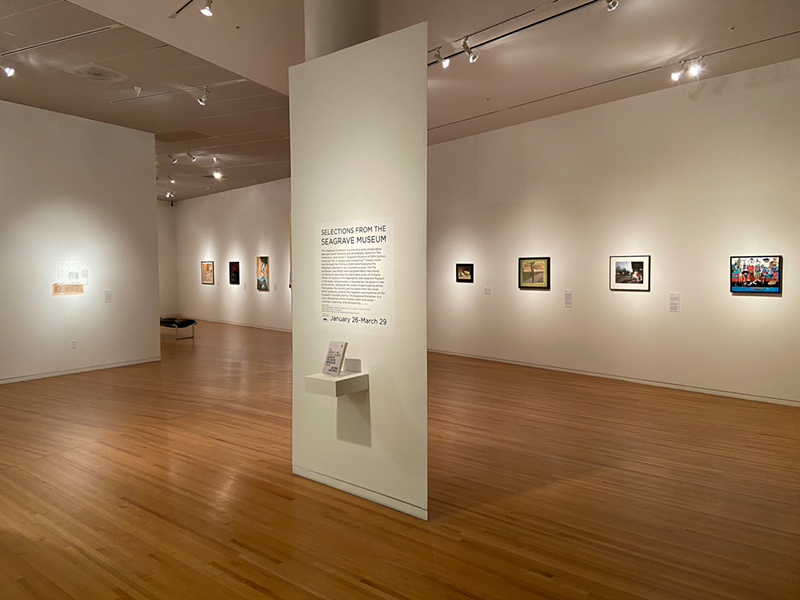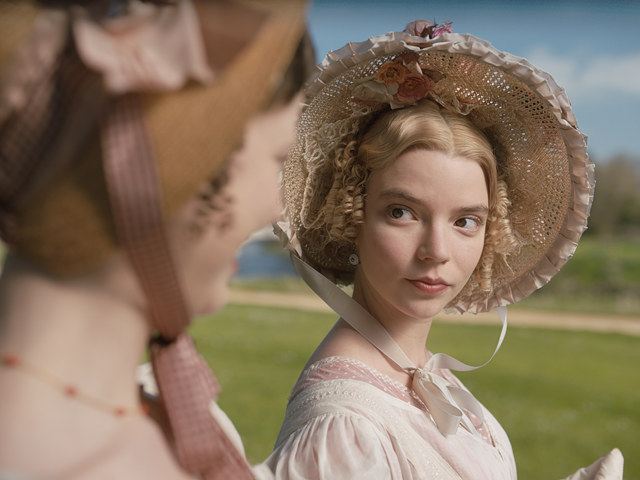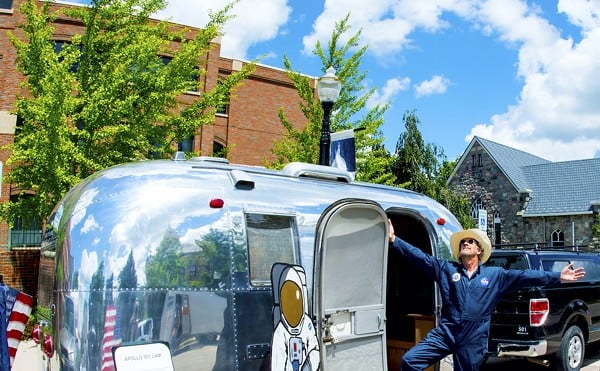
Like many other art gallery and museum shows, the current Selections from the Seagrave Museum at the University of Cincinnati’s Reed Gallery has plenty of exhibit labels — those wall notices adjacent to individual works that provide names and information about their creators.
But this show’s labels are decidedly different. Weird and unsettling, even. Some have a contemptuous air about the work they describe. For instance, here’s what the label text says about deceased American painter Kenneth Raney Clark’s 1937 “Mountain and Sky”:
“The painting, like every other landscape in which imposing slate mountains rise to meet a dusk-red sky, depicts nothing you have seen before, yet is also an image of something you have often seen — a romanticized rendering of pastoral bliss, an ominous mountain pass, an impressive American vista, the seemingly infinite reproduction of dramatic topography. Though the mountain and sky in ‘Mountain and Sky’ may exist somewhere west of here, Clark never saw it, instead copying the scene from a photograph of a black-and-white painting he’d found in a book. Clark often looked to photographs of other paintings for inspiration, saving him the toll and exertion of trekking into the wild with his paints and easel.”
Others seem, well, nightmarishly digressive, possibly borderline delusional and definitely excessively TMI. An unnamed museum writer/curator, getting extremely confessional, provides this label copy for the 1954 watercolor “Obtusion,” by the late American artist Tanya Conn:
“In my twenties, I suffered from what is known as rabbit starvation from eating nothing but game for forty-five days on a spiritual journey I took in the Uinta Mountains in northern Utah. For weeks I craved nothing but bread, pasta, and the fattiest beef while subsisting on rabbits and bits of a rotting elk. Near the end of my journey, sick and weak, I consumed a handful of berries and, supine on the surface of a rock, stared into the sky and hallucinated for seventy-two hours. I cannot adequately describe what I saw, but it is close enough to Conn’s impressionistic watercolor depicting the collapse of a mineshaft on a family of mule deer that I am chilled and shivery whenever I look upon it.”
The label also helpfully tells the museumgoer that prints of “Obtusion” are available in the gift shop, along with “coffee mugs, tie clasps and silk scarves inspired by the painting.”
Well, actually, you won’t find any such knickknacks for sale at Reed Gallery, which is in the University of Cincinnati’s College of Design, Architecture, Art and Planning. The exhibit Selections from the Seagrave Museum isn’t the show you might at first believe it is. There is no Seagrave Museum, no Tanya Conn, no Kenneth Raney Clark or any of the other artists described on the exhibit labels. The show’s premise and details are a fiction. I hesitate to call it a put-on, although there are times I laughed. But when some of the labels got really Twilight Zone creepy, I realized how uncomfortably deep the impulse to create can be for some artists and how tenuous our understanding of an artwork’s meaning can be.
Selections from the Seagrave Museum, which is on display through March 29, was inspired by a new novel, The Ambrose J. and Vivian T. Seagrave Museum of 20th Century American Art, by Matthew Kirkpatrick, an assistant professor of creative writing at Eastern Michigan University. It was published by Acre Books, a 3-year-old literary press affiliated with UC’s creative writing program.
Acre’s roots go back to 2002, when University of Cincinnati hired its editor, Nicola Mason, to create the literary journal The Cincinnati Review to give doctoral students in the school’s creative writing program the opportunity to learn the art and business of literary publishing. It debuted in 2003 and became so successful she started a book-publishing arm in 2017, also an outgrowth of the creative writing department, in partnership with the University of Cincinnati Press. Acre now publishes some six titles a year — fiction, poetry and creative non-fiction. (Writers need not be from UC.)

“We did not expect it to take off the way it has,” Mason says. “We received a thousand submissions in prose last year; fewer in poetry. I’m expecting 1,500 submissions this year, because of our success. Three of our titles have been long-listed for the PEN America awards, and one right now is a finalist for the PEN/Hemingway Literary Award for debut novel.” (Tomas Moniz’s Big Familia is that novel; the winner will be announced April 5.)
Kirkpatrick’s novel is largely in the form of exhibit labels, but every now and then, the description for a specific (imaginary) artwork expands and allows bits of mysterious narratives — the disappearance of the Seagraves’ daughter during a violent storm, the life of the Seagrave family and the strange artists they knew, the musings of a troubled curator (and unreliable narrator) who is in love with an artist’s ghost.
Mason suggested an exhibit based on the book to Aaron Cowan, Reed Gallery curator, and he developed it with her and Brian Schumacher, a DAAP assistant professor. The information about the actual 24 contributing artists and their work is at the bottom of the exhibit labels on the wall.
Cowan wanted the selected artists to create work that responded to a specific exhibit label, yet wasn’t beholden to it.
“I wanted to make sure the labels were used as a prompt and that the artists had the ability to use the framework as a guideline to work in a manner they were comfortable,” he says.
For instance, Kim Krause — using oil and spray paint on panel — interpreted the fictional Marian Bailey’s Italian Futurism-influenced “Aerial” as a jumpily energetic abstracted landscape, full of bright colors and prominent shapes that live up to the label’s description that Bailey painted it “as if plummeting toward her childhood” from the sky. And in her “Somewhere West of Here,” artist Emily JB Sullivan uses oil on shellacked paper to respond to the bogus description of Clark’s “Mountain and Sky” in a way that makes clouds over a mountain seem like ash from a volcanic eruption hurtling toward a doomsday-ish otherworldly red sky.
For his part, author Kirkpatrick is delighted his imaginary museum has been turned into a real one, at least temporarily. He says, via email, “I love that the book became a collaboration between what I made and the artists’ imaginations, and love that people who visit the exhibit will be able to see the labels that I wrote and the art they inspired.”
Selections from the Seagrave Museum is on display through March 29 at UC’s Reed Gallery (2624 Clifton Ave., Clifton). For more information, visit daap.uc.edu.





